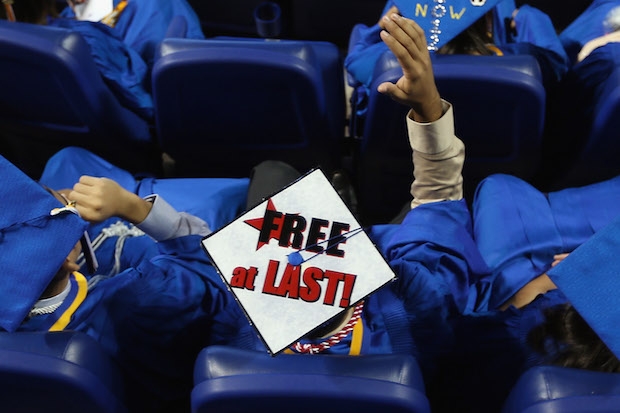The last few days have been immensely frustrating for students, teachers and parents involved with free schools, because, yet again, their schools have become a political football. Following the recent ‘debates’, you would be forgiven for believing that these new independent state-funded schools have been foisted on communities who do not want them, are languishing half empty and have been written off by Ofsted, struggling to keep pace with other state schools.
Since 2010, nearly 300 new state schools have been set up – by teachers, charities and community groups. Each one is only in existence because parents have come forward in their thousands, demanding more for their children. More because they aren’t happy with what is on offer locally or, quite literally more, because there aren’t enough school places full stop.
The national political debate is a world away from the reality on the ground. Free schools are proving hugely popular in local communities around England, with the latest data showing an average of three applicants for every place in a free school, rising to 10 applications at the most popular options.
It is true that some free schools have not had every place full in their first year of operation. But this has nothing to do with their popularity or quality, and everything to do with the challenges in finding suitable premises. Many free schools have been unable to confirm an exact location to parents until very late in the day. Too often, local authorities and local politics are behind these difficulties; with planning processes used to cause delays, together with a seemingly aloof attitude to parents. Once these issues have been resolved and the schools are in their second or third years, parents are voting with their feet.
Demand is high because the early evidence shows that free schools are delivering high quality education. A generous interpretation of the recent coverage about free schools trailing their counterparts in Ofsted assessments would suggest a misunderstanding, rather than a deliberate attempt to undermine or mislead. Yet the clear facts are these: on a like-for-like comparison, free schools are outperforming other state schools. Free schools are inspected in their second year of operation, so all of those inspected to date have been examined under the new, more rigorous, Ofsted framework. Compared with state schools also inspected since the new regime was introduced, 67 per cent of free schools have been judged as ‘Outstanding’ or ‘Good’, compared with 63 per cent of all other state schools. What’s more, free schools are twice as likely to be ‘Outstanding’ than their other state education counterparts.
The numbers are still small; but it’s particularly interesting to note that, when you look closely at those which are being judged as good or outstanding, groups set up by ‘new entrants’ to the market are doing particularly well. Nearly three quarters (74 per cent) of the new provider schools were good or outstanding, compared to 63 per cent of new schools led by more established groups.
This further underscores the critical importance of ensuring that new providers can continue to enter the education sector, bringing with them new ideas and fresh perspective.
Natalie Evans is Director of the New Schools Network.






Comments